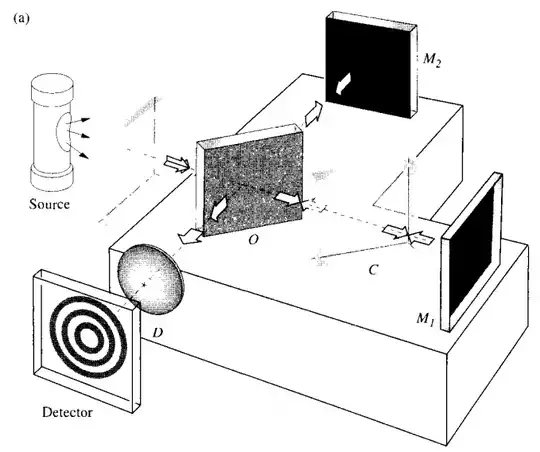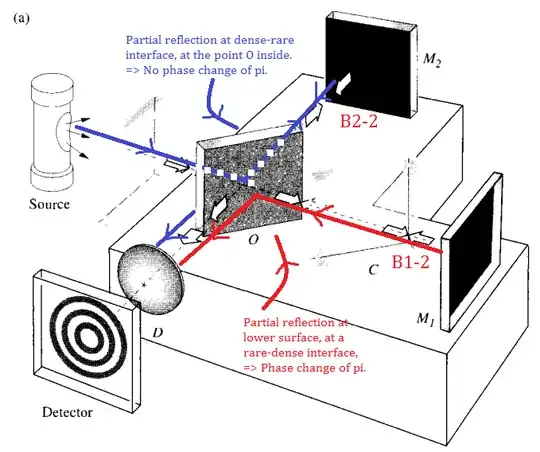In a Michelson interferometer (image from Optics by E. Hecht )  .
.
To quote from the same book:
As the figure shows, the optical path difference for these rays is nearly $2d \cos 0$. There is an additional phase term arising from the fact that the wave traversing the arm $OM2$ is internally reflected in the beamsplitter, whereas the $OM1$-wave is externally reflected at $O$. If the beamsplitter is simply an uncoated glass plate, the relative phase shift resulting from the two reflections will be $\pi$ radians.
Consider a beam from $B$ from $S$ towards $O$. At $O$ it splits into two beams:
Beam B1:
- Results from refraction of $B$ at the beam splitter $O$ towards mirror $M1$.
- Is reflected in the opposite direction at $M1$.
- Is reflected towards $D$ at $O$. Is it reflected before entering $O$ or after entering $O$ and encountering the air at the other side?
Beam B2:
- Results from reflection of $B$ at the beam splitter $O$ towards mirror $M2$. Should there be a phase shift here? This is should be an air/(glass/metal coating) interface.
- Is reflected in the opposite direction at $M2$.
- Goes through $O$ towards detector $D$.
Question: Could someone tell me at which of these steps a phase shift occurs? It seems to me that it could happen at steps $B1-2$, $B1-3$, $B2-1$ and $B2-2$, but that is probably not right.
